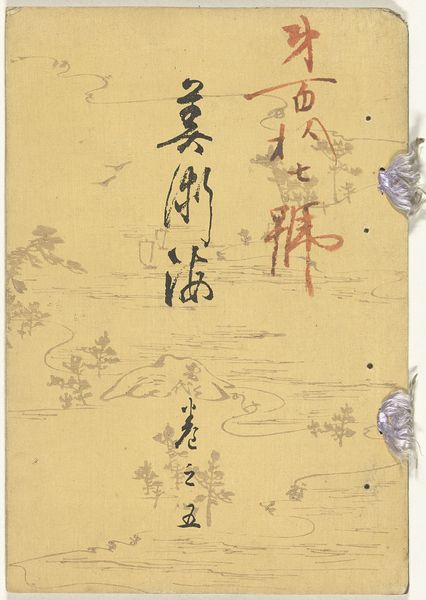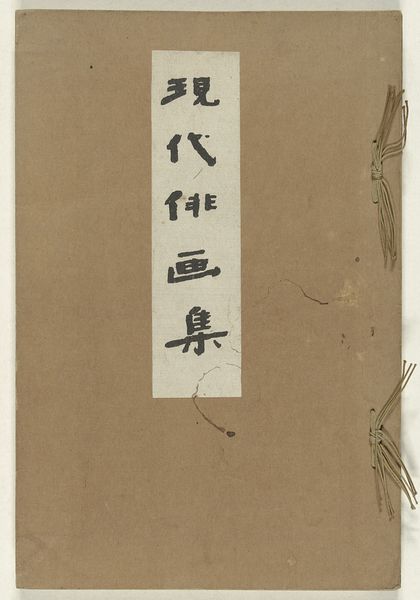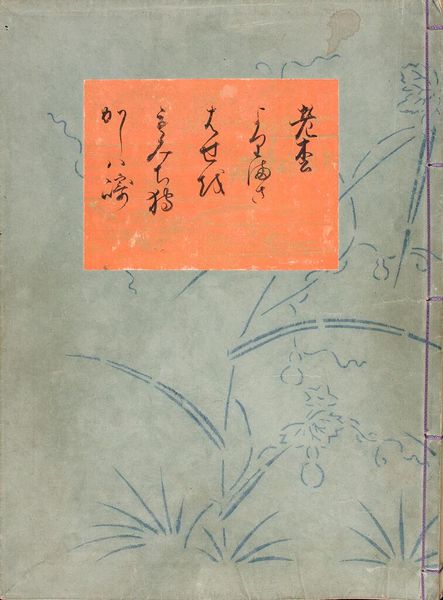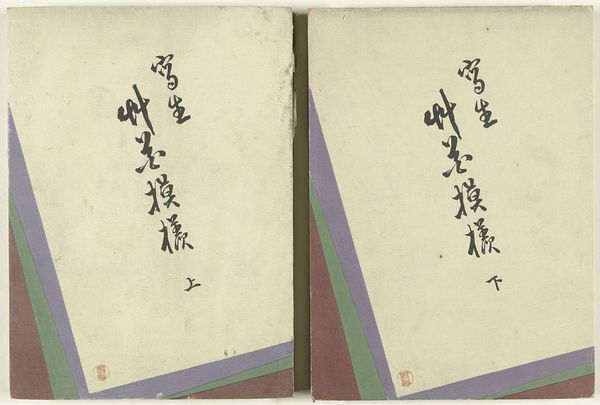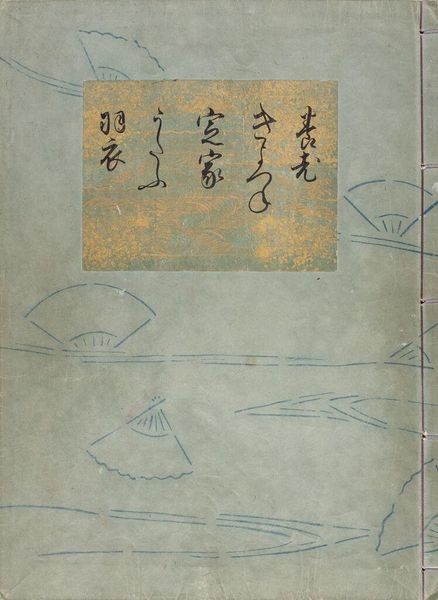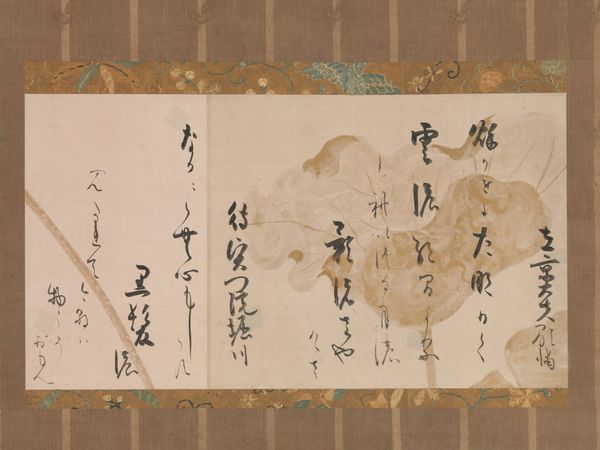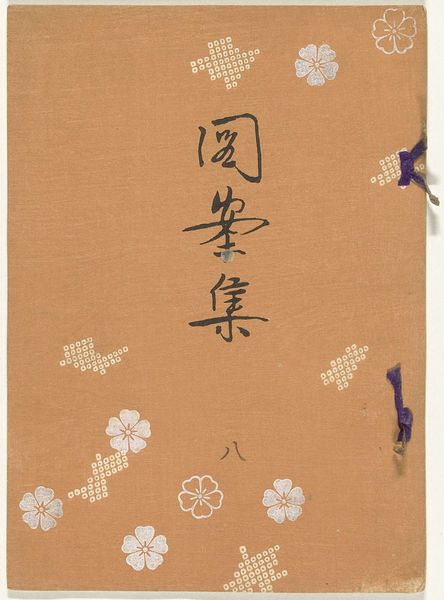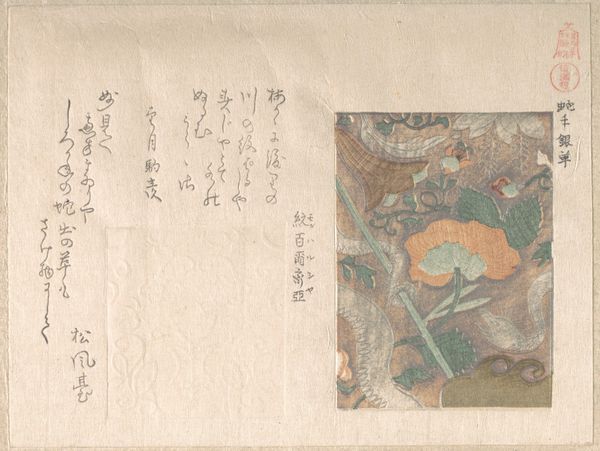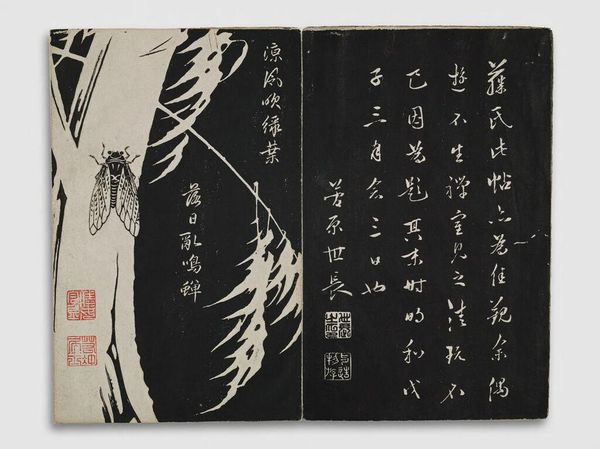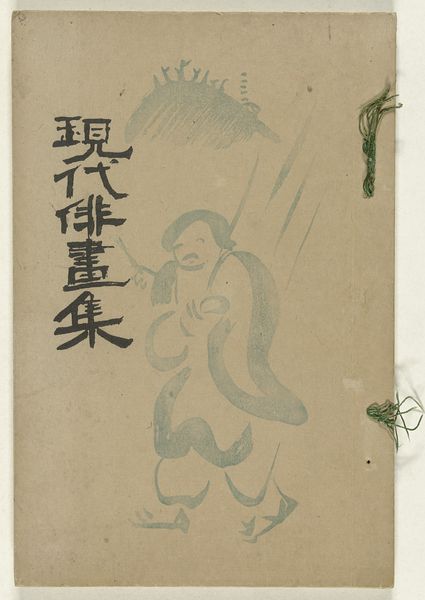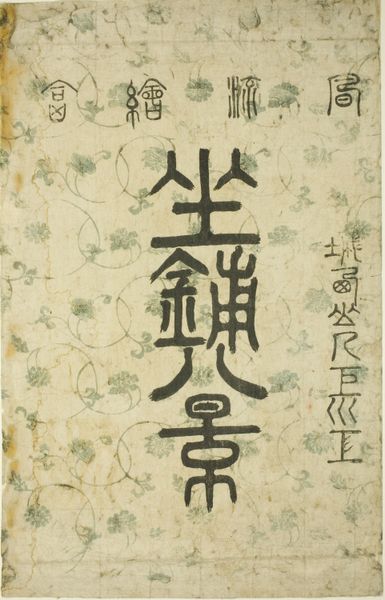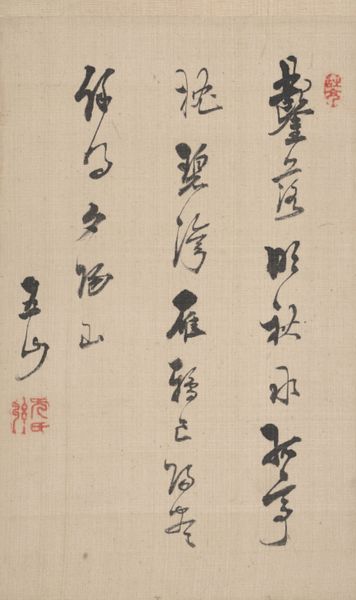
Dimensions: height 247 mm, width 164 mm
Copyright: Rijks Museum: Open Domain
Curator: These are pages from “Verzameling moderne snelle tekeningen,” or "Collection of Modern Quick Drawings" by Ishii Hakutei, created between 1915 and 1917. Editor: They look incredibly delicate, almost ephemeral. I am struck by the use of line, how economical and deliberate it appears to be, creating the form out of thin air. Curator: Hakutei was instrumental in incorporating Western artistic movements into the Japanese art world. He embraced the concept of *japonisme* that took Europe by storm in the 19th century but engaged with the form critically from within the local culture, asking interesting questions about modern identity and culture. Editor: Indeed. Given the materials, I can see how important printing and bookmaking would have been to Hakutei’s overall artistic practice. Do you think this choice helped his work reach a broader audience at that time? Curator: I think so. Printmaking allowed for more democratization of art, engaging broader social strata than more exclusive artistic circles might otherwise allow. In a world of rising social inequalities, Ishii was no stranger to socialist discourse and avant-garde circles. Editor: Considering the paper itself, and how seemingly commonplace it is, the contrast between material and image strikes me. It forces a conversation between accessibility and technique; this is a method for mass communication which lends itself beautifully to a variety of subject matters—particularly in his application to landscapes. Curator: Yes, his adoption of watercolor and ink alongside printmaking exemplifies this cultural translation between Western and Eastern visuality. I’m fascinated by the tension embodied in these rapid sketches, produced in the context of an emergent “modern” Japan—a country grappling with rapid westernization and its imperialist ambitions. Editor: Agreed. Thinking about his process and access to the raw materials makes me consider Hakutei’s contemporary place in the legacy of Asian art, challenging rigid Western-constructed divisions between "high art" and traditional craftsmanship. Curator: Exactly. Hakutei’s legacy lies in challenging fixed cultural categories of center and periphery, subject and object, craft and design by bridging those artificial divides through form, content, and materials. Editor: Definitely food for thought about the historical reception and present context for considering the materials that the artist brought into conversation across different audiences. Curator: It’s precisely that synthesis which brings Hakutei’s visual experiments to the fore and keeps them fresh.
Comments
No comments
Be the first to comment and join the conversation on the ultimate creative platform.
